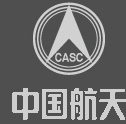History
Based on fight proven technology of LM-1 and LM-2, the development of LM- 2C launch vehicle was started in 1970. After its successful fight in 1975, LM-2 was renamed to LM-2C.
With 14 successes out of 14 launches for LEO missions, this launch vehicle was selected by Motorola, Inc. in April 1993 to provide multiple launches for Iridium communications satellites. According to the Iridium launch mission requirement, some necessary modifications were made. Then this launch vehicle was renamed as LM-2C/SD. Twelve (12) Iridium satellites were successfully launched by LM-2C/SD.

| Stage | 1st Stage | 2nd Stage | Upper Stage |
| Stage Diameter (m) | 3.35 | 3.35 | 2.7 |
| Stage Length (m) | 25.720 | 7.757 | 1.5 |
| Propellant mass (kg) | 162,706 | 54,667 | 125/50 |
| Propellant | UDMH /N2O4 | HTPB/Hydrazine | |
| Engine | YF-21C | YF-24E YF-22E (Main) YF23C (Vernier) |
Solid Motor / RCS (Reaction Control System) |
| Thrust (KN) | 2961.6 | 741.4 (Main) 11.8x4 (Vernier) |
10.78 (solid motor) |
| Engine Specific Impulse (N��Sec / kg) |
2556.5 (on ground) |
2922.37 (Main) 2834.11 (Vernier) (in vacuum) |
2804 (solid motor) |
| Lift-off Mass (t) | 233 | ||
| Overall Length (m) | 42 | ||
| Fairing Diameter (m) | 3.35 | ||
| Launch Capability (kg) | LM-2C | LEO | 3850 (200km/63°) |
| SSO | 1400 (600km) | ||
| LM-2C/SM | GTO | 1250 (28°) | |
| LM-2C/SMA | SSO | 1900 (600km) | |
| 1. Fairing 2. Payload 3. Payload Adapter 4. Vehicle Equipment Bay 5. Second Stage Oxidizer Tank 6. Inter-tank Section 7. Second Stage Fuel Tank 8. Second Stage Vernier Engines 9. Second Stage main Engine |
10. Inter-stage Structure 11. First Stage Oxidizer Tank 12. Inter-tank Section 13. First Stage Fuel Tank 14. Backward Transition Section 15. Tail Section 16. Stabilizer 17. First Stage Engines |

